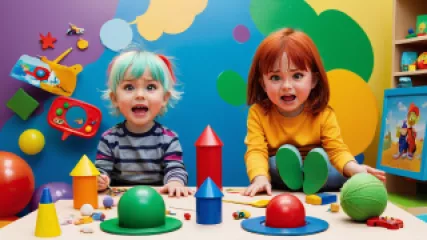Trauma Healing Through Play: Lessons from 'Inside Out'
Trauma Healing Through Play: Lessons from 'Inside Out'
In the Pixar animated film "Inside Out," we are taken on a captivating journey through the mind of an 11-year-old girl named Riley, where her emotions – Joy, Sadness, Fear, Anger, and Disgust – come to life as vibrant, sentient characters. As we follow Riley's emotional landscape, we witness the profound impact that significant life events, especially trauma, can have on a child's psyche. This poignant exploration of the inner workings of a young mind serves as a powerful metaphor for the transformative potential of play therapy in helping children heal from emotional wounds.
Embracing the Full Spectrum of Emotions
One of the central themes in "Inside Out" is the importance of acknowledging and validating the full range of human emotions, rather than suppressing or ignoring them. In Riley's case, her parents' well-intentioned efforts to keep her "happy" and "positive" during their family's relocation ultimately backfire, leading to a cascade of emotional turmoil. This resonates deeply with the principles of play therapy, which emphasize the need for children to fully experience and express their emotions, including the difficult ones, as part of the healing process.
As child therapist Orlando Roberts explains, "Children, like Riley, often struggle to make sense of their emotions, especially in the face of significant life changes or traumatic experiences. Play therapy provides a safe and nurturing space for them to explore these emotions, to express them freely, and to learn how to manage them in healthy ways."
By allowing children to engage in therapeutic play, therapists create an environment where young clients can confront their fears, process their grief, and work through their anger – all while developing crucial coping mechanisms and resilience. Just as the personified emotions in "Inside Out" are given a voice and a role to play, play therapy empowers children to give form and function to their own inner experiences.
The Transformative Power of Imagination
Another powerful lesson we can glean from "Inside Out" is the transformative power of imagination and creative expression. Throughout the film, Riley's emotions navigate a fantastical, ever-changing landscape within her mind, where memories are stored as colorful, tangible orbs and core memories shape the very foundation of her personality. This imaginative representation of the human psyche mirrors the essential role of imaginative play in the therapeutic process.
As child therapist Myla Young explains, "Children often lack the verbal skills to fully articulate their thoughts and feelings, especially when it comes to traumatic experiences. Play therapy taps into their natural inclination for imaginative expression, allowing them to process complex emotions through the metaphor of toys, art supplies, or even role-playing."
By engaging in therapeutic play, children are empowered to externalize their internal struggles, transforming abstract feelings into tangible, manageable forms. This not only helps them to better understand their own emotional landscapes but also provides a safe space for them to experiment with new coping strategies and problem-solving techniques.
Navigating the Complexities of Memory and Emotion
One of the most poignant aspects of "Inside Out" is its exploration of the complex relationship between memory and emotion. As Riley's core memories are disrupted and her "islands of personality" begin to crumble, we witness the profound impact that this has on her sense of self and overall well-being. This narrative resonates deeply with the work of play therapists, who often help children navigate the intricacies of their memories and the emotions attached to them.
As child therapist Ward Watkins shares, "Children who have experienced trauma often struggle to make sense of their memories, which can feel fragmented, distorted, or overwhelming. Play therapy provides a gentle, supportive framework for them to explore these memories, to reconnect with their emotions, and to ultimately integrate these experiences into a more cohesive narrative of their lives."
Through the use of symbolic play, art, and storytelling, play therapists help children to process traumatic memories in a way that is both manageable and empowering. By giving form to their experiences, young clients are able to gain a sense of mastery and control over their emotional landscapes, paving the way for healing and growth.
Embracing the Bittersweet Nature of Emotions
Perhaps one of the most profound lessons we can take from "Inside Out" is the importance of embracing the bittersweet nature of emotions. As Riley navigates the upheaval of her family's move, we witness the interplay between her "positive" emotions, like Joy, and her "negative" emotions, such as Sadness. Rather than viewing these emotions as inherently good or bad, the film illustrates how they work in tandem to shape a person's experiences and sense of self.
"One of the key insights we can glean from 'Inside Out' is that emotions, even the difficult ones, serve an important purpose," says child therapist Mckenzie Reeves. "Sadness, for example, helps us to process loss, to seek comfort, and to deepen our connections with others. Play therapy helps children to understand and accept the full spectrum of their emotions, rather than trying to suppress or 'fix' them."
By allowing children to explore the nuances of their emotional experiences through play, therapists empower them to develop a more holistic and resilient sense of self. Rather than striving for a constant state of happiness, children learn to embrace the natural ebb and flow of their feelings, building the emotional intelligence and self-awareness necessary to navigate life's challenges.
Fostering Resilience and Post-Traumatic Growth
Ultimately, the lessons we can take from "Inside Out" in the context of play therapy are not just about healing from trauma, but about cultivating resilience and the potential for post-traumatic growth. Just as Riley's core memories and "islands of personality" are ultimately reshaped and strengthened through her emotional journey, play therapy provides a framework for children to emerge from their traumatic experiences with a renewed sense of purpose, empowerment, and self-understanding.
"Play therapy is not just about helping children to cope with or overcome their trauma," explains child therapist Orlando Roberts. "It's about empowering them to transform their experiences into a source of strength, to develop the tools and resilience they need to thrive, even in the face of adversity. It's a journey of self-discovery and personal growth that can have a profound and lasting impact on a child's life."
By drawing inspiration from the captivating narrative of "Inside Out," we can gain a deeper appreciation for the transformative potential of play therapy in supporting the emotional well-being and healing of children who have experienced trauma. Through the power of imaginative expression, the validation of complex emotions, and the integration of fragmented memories, play therapy offers a holistic and empowering approach to helping young clients navigate the challenges of their inner worlds and emerge stronger than ever before.
Conclusion
The Pixar film "Inside Out" provides a rich and insightful metaphor for the work of play therapists, who strive to help children process their emotions, make sense of their experiences, and cultivate resilience in the face of trauma. By embracing the full spectrum of emotions, tapping into the transformative power of imagination, navigating the complexities of memory, and fostering a deeper understanding of the bittersweet nature of our feelings, play therapy offers a holistic and empowering approach to supporting the emotional well-being of young clients.
Through the lens of "Inside Out," we can gain a deeper appreciation for the vital role that play therapy plays in the lives of children who have experienced trauma. By drawing inspiration from the film's poignant exploration of the human psyche, we can better understand the profound impact that this therapeutic approach can have, helping young clients to not only heal from their wounds but to emerge stronger, more resilient, and better equipped to navigate the complexities of their emotional landscapes.
In the end, the lessons we can take from "Inside Out" in the context of play therapy are a testament to the power of imagination, empathy, and the transformative potential of human connection. By honoring the full spectrum of a child's emotions, play therapists create a safe and nurturing space for young clients to explore, express, and ultimately integrate their experiences – a journey that can lead to profound healing, personal growth, and a renewed sense of hope and possibility.






